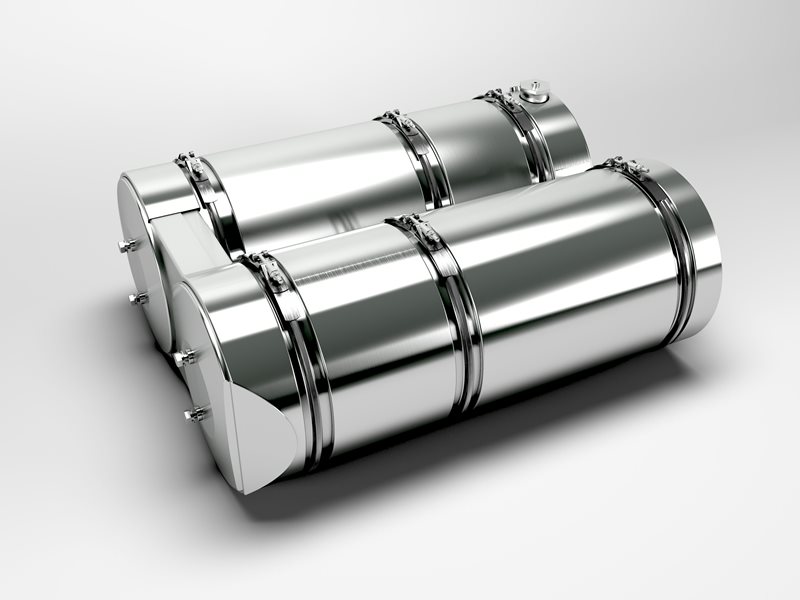Here, Martin Ott, Head of Retrofit Business Development at Eminox, looks at why the demonisation of diesel by consumer media is over-simplistic.
“Clean diesel technology is available and working in the real world on the latest Euro VI heavy duty vehicles. It can even be retrofitted to older vehicles to bring them up to this high standard. Demonising diesel is therefore missing the point; it is not a choice between dirty diesel or alternative fuels – clean diesel is a proven and affordable option.
Technology Roadmap
Many technology roadmaps show electric or other alternative fuels replacing diesel. However, they don’t agree on the timescale, although they do agree that it is not immediate. Challenges remain for these relatively new technologies – especially for heavy duty vehicles such as buses, which have always presented the biggest technical problems. In the meantime, older untreated diesel engines, or those not optimised for urban operation (including many Euro IV and V vehicles) remain significant contributors to air pollution.
Latest research evidence shows just how harmful this air pollution is to human health and the environment. Statistics from COMEAP estimate that 23,500 UK deaths each year are caused by NO2 pollution, whilst the damaging effects of particulate matter (PM), especially ultra-fine particles, are well established and cause 29,000 deaths. The combined effect is estimated at more than 40,000 premature deaths each year, making this one of the greatest threats to human health in the UK.
Against this backdrop, action is needed now to reduce air pollution in our major cities. Replacing entire fleets with Euro VI or alternative fuel vehicles is not an affordable option. However, retrofitting SCRT-type technology offers a way forward, as it is capable of achieving near-zero pollutant emissions, even from older diesel engine vehicles. This route is much more cost effective than buying new and can be completed in a relatively short timescale, resulting in a virtually immediate positive impact on air quality.
Air Quality experts at King’s College London have attributed a 16% reduction in NO2 pollution on Putney High Street to SCRT technology retrofitted to 93 buses. Eminox upgraded the buses between April and July 2013 and Kings College identified a clear decrease in NOx and NO2 concentration during the same period.
NO2 concentrations on Putney High Street were previously amongst the highest in London and far exceeded limit values. As well as the large drop in kerbside NOx, when the systems were fitted, there was a sustained decrease in NO2 concentrations of 12% at the kerbside over the full period of the study. Therefore, the SCRT retrofitting programme has been particularly effective in reducing the number of short term exceedences of NO2 limits.
Independent testing of SCRT technology at Millbrook Vehicles Emissions Laboratory over the MLTB (which simulates challenging urban operating conditions in London) demonstrated:
NO2 reduction of 96.7%, along with NOx (95%), PM (98.8%), HC (98.1%) and CO (96.5%).
Similarly, averaged across a bus route in Brighton, the total NOx emissions from a Euro III bus retrofitted with an Eminox SCRT was substantially below those of all other buses tested, including a Euro V hybrid vehicle.
On-road tests also show that SCRT retrofit solutions really work in tough urban operating conditions where pollution is worst.
Clean Air Future
2020 is emerging as a key political deadline for addressing the worst air pollution problems in UK cities, though London is likely to take longer. The scale of change required to cut London emissions cannot be underestimated – plans are already in place for an ultra-low emission zone (ULEZ) in 2020. The mayoral election campaign has also raised the possibility of this date being brought forward.
The London ULEZ will require buses travelling in the congestion charge zone and which don’t meet Euro VI standard or better, to pay a daily charge of £100 or buses can be retrofitted with SCRT technology to meet the standard. The scheme will operate 24 hours a day, seven days a week, and will mean that older, untreated heavy duty diesels will have to pay.
Outside London, at least five other cities are planning Clean Air Zones. Birmingham, Leeds, Derby, Nottingham and Southampton will implement CAZ by 2020. With a national framework of CAZs planned, it is likely that cities such as Manchester may follow suit. The details of the CAZ are still being finalised, although retrofit emission technology has been identified as an important element of plans to ensure only low emission vehicles enter these zones.
A zero emission, low carbon future remains some time away, but that shouldn’t stop us taking steps now to reduce pollution. The consumer press would take a simplistic view, demonise all diesel vehicles and call for a blanket ban. However, in combination with latest SCRT technology, there is an important place for diesel vehicles and indeed, they will continue to provide an essential service to the UK population.
Planned introduction of CAZ and ULEZ, along with continued focus on air pollution levels, will make real world emissions performance an important consideration for operators over the next few years.”
